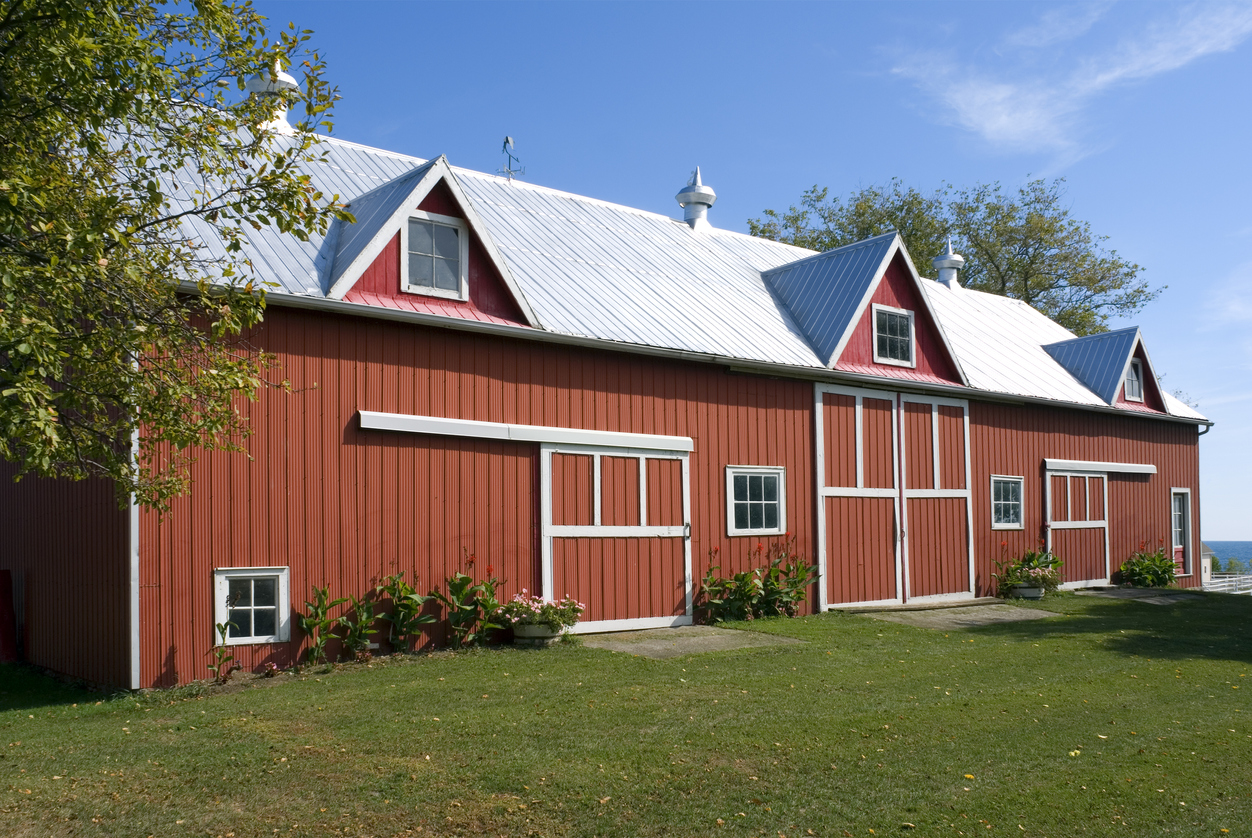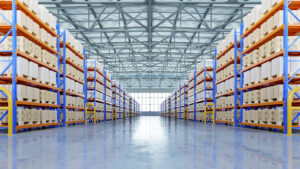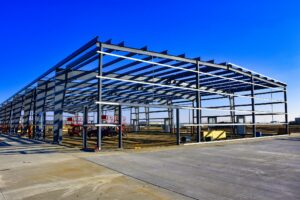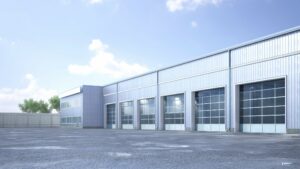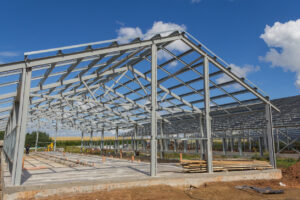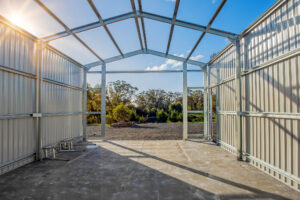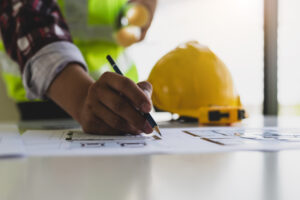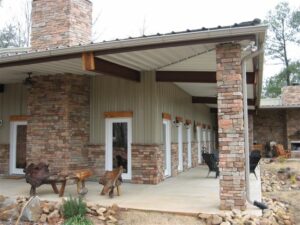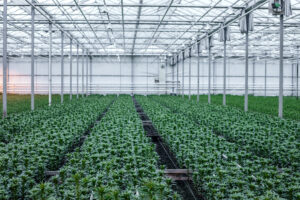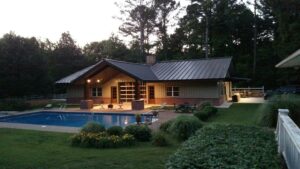Steel buildings have long been a popular choice for a variety of construction projects. From warehouses and agricultural buildings to commercial spaces and residential homes, the versatility and durability of steel buildings, designs and their cost-effectiveness make them an attractive option.
In 2021, structural steel prices increased significantly, rising by 91% since the end of 2020, with a 45% increase in the final quarter of the year. This was a notable change from the steady steel costs experienced in 2019 and 2020. As of April 2024, structural steel prices have stabilized, with small but consistent cost increases expected for the rest of the year.
Before embarking on a steel building project, it is essential to understand the cost considerations.
In this article, we will explore the basics of steel buildings, factors that influence their cost, the process of building a steel structure, cost comparisons with other building materials, and ways to reduce the cost of steel buildings.
Table of Contents
- The Basics of Steel Buildings
- Factors Influencing the Cost of Steel Buildings
- The Process of Building a Steel Structure
- Cost Comparison with Other Building Materials
- Ways to Reduce the Cost of Steel Buildings
- Conclusion
- Frequently Asked Questions
The Basics of Steel Buildings
Steel buildings, as the name suggests, are structures built primarily using steel as the main construction material. These buildings consist of steel columns, beams, and other elements that provide the necessary structural support.
Steel offers several key benefits for construction, including strength, flexibility, and resistance to fire and pests.
These buildings have been gaining popularity in various industries due to their durability and cost-effectiveness. The versatility of steel allows for large clear-span interiors without the need for support columns, making them ideal for industrial warehouses, aircraft hangars, and agricultural buildings. Additionally, steel buildings are environmentally friendly as they are often made from recycled materials and can be easily recycled at the end of their lifespan.

What are Steel Buildings?
Steel buildings are preengineered metal structures that are fabricated off-site and then assembled at the construction site.
Steel structure designs meet specific requirements and can be customized to suit various applications. With advancements in technology, steel buildings now offer unmatched design possibilities.
One of the key advantages of steel buildings is their energy efficiency. Steel structures can easily accommodate insulation materials, reducing heating and cooling costs.
This energy efficiency not only benefits the environment but also leads to long-term cost savings for the building owner. Additionally, steel buildings are low-maintenance, requiring minimal upkeep compared to traditional construction materials.
Benefits of Steel Buildings
There are numerous advantages to choosing steel as the material for your building project. Firstly, steel is incredibly strong, making it capable of withstanding extreme weather conditions and natural disasters.
Additionally, steel is resistant to pests, such as termites, which can cause significant damage to other construction materials. Moreover, steel buildings can be constructed relatively quickly, resulting in shorter project timelines.
Another benefit of steel structures is their design flexibility. Steel allows for long spans and open floor plans, giving architects and designers the freedom to create innovative and modern structures. Whether it’s a sleek office building or a spacious retail space, steel buildings can be tailored to meet the aesthetic and functional needs of any project.
Furthermore, steel is a non-combustible material, providing added safety and peace of mind to building occupants.
Did You Know?
When steel is used for construction, maintenance costs can be significantly lower than those of other materials. On average, building owners can expect to spend around 1% to 3% of the total cost of the steel building on annual maintenance.
Factors Influencing the Cost of Steel Buildings
Several factors contribute to the overall cost of steel buildings. Understanding these factors can help you make informed decisions and optimize your budget for your construction project.
When considering the cost of steel structures, it’s essential to delve into the specifics of material costs, labor costs, and design complexity. These elements play a crucial role in determining the final budget for your steel construction project.
Material Costs
The cost of steel is a significant factor when it comes to the overall cost of steel buildings. Steel prices can fluctuate due to various factors, including supply and demand, market conditions, and global trends. It is advisable to closely monitor steel prices and plan your project accordingly to ensure you secure the best possible rates.
In addition to the cost of steel, other material costs such as insulation, cladding, and finishes can also impact the overall budget.
Choosing high-quality materials that meet your project requirements while staying within budget is essential for a successful steel building project.
Check out: Effective Strategies For Insulating Steel Buildings
Labor Costs
The cost of labor is another important consideration when calculating the cost of steel buildings. Skilled labor is required for the design, fabrication, and assembly of steel structures. Labor costs can vary depending on factors such as location, market rates, and project complexity.
It is crucial to obtain detailed quotes and factor in labor costs when budgeting for your steel building project.
Furthermore, labor costs can be influenced by the efficiency of the construction process. Optimal project planning, streamlined workflows, and skilled labor management can help minimize labor expenses and ensure timely project completion.
Design Complexity
The complexity of the design can significantly impact the cost of a steel structures. Intricate designs with unique architectural features or complex structural elements may require additional engineering and fabrication work, thereby increasing the overall cost. Simpler designs with standard specifications are generally more cost-effective.
When considering design complexity, it’s important to balance aesthetics with budget constraints.
Working closely with architects and engineers to develop innovative yet cost-effective design solutions can help you achieve your desired outcome without compromising on quality or budget.
The Process of Building a Steel Structure
Building a steel structure involves several stages, each of which contributes to the final cost of the project.
Planning and Design
The planning and design phase is crucial for a successful steel building project. During this stage, your architect and engineer will work together to create an efficient and functional design that meets your specific needs.
This phase includes detailed drawings, structural calculations, and obtaining necessary permits. The planning and design phase of steel structures help in estimating the overall cost of the project, including material and labor expenses.
Moreover, during the planning and design phase, considerations are made for factors such as environmental impact, energy efficiency, and future expansion possibilities. Architects and engineers collaborate to optimize the use of steel, ensuring structural integrity while minimizing material waste.
This phase also involves consultations with clients to incorporate their feedback and preferences into the design, resulting in a customized steel structure that fulfills both practical and aesthetic requirements.
Check out: How To Create Your Perfect Custom Steel Building Design
Construction and Assembly
Once the planning and design phase is complete, the construction and assembly process can begin. This involves fabricating the steel components off-site and then transporting them to the construction site for assembly.
Skilled labor is required for precise and efficient assembly, ensuring that the building meets all safety and quality standards. The construction and assembly phase accounts for a significant portion of the overall cost of a steel building project.
Furthermore, the construction and assembly phase includes additional steps such as site preparation, foundation laying, and the installation of utilities within the steel structure. Specialized equipment and machinery are utilized during this phase to handle the heavy steel components and ensure accurate placement.
Quality control measures are implemented throughout the assembly process to guarantee the structural integrity of the steel building and adherence to design specifications.
Effective project management is essential during construction to coordinate various tasks and ensure timely completion within budget constraints.
Cost Comparison with Other Building Materials
When considering the cost of steel buildings, it is important to compare them with other commonly used building materials, such as wood and concrete.
Steel buildings have gained popularity in the construction industry due to their numerous advantages over traditional building materials like wood and concrete.
Let’s delve deeper into the comparison to understand why steel is a preferred choice for many construction projects.
Steel vs. Wood
While wood may initially seem like a more cost-effective material, it is important to consider the long-term costs associated with maintenance and durability.
Steel buildings require less maintenance and are more durable than wood structures, reducing the need for frequent repairs and replacements.
Moreover, steel is a sustainable material that can be recycled, making it an environmentally friendly choice.
Its strength and resistance to pests and rot further contribute to its longevity, making it a sound investment in the long run.
Check out our comprehensive comparison of Metal vs Wood buildings
Steel vs. Concrete
Concrete buildings can be cost-competitive with steel buildings, depending on the specific project requirements. However, steel offers a plethora of advantages that make it a compelling choice for many builders.
Steel structures can be erected much faster than concrete buildings, leading to savings in construction time and labor costs. Additionally, steel’s flexibility in design allows for innovative and unique architectural solutions that may not be achievable with concrete.
When evaluating the cost comparison between steel and concrete structures, it is crucial to consider factors such as construction timelines, labor costs, design possibilities, and long-term maintenance expenses to make an informed decision.

Ways to Reduce the Cost of Steel Buildings
There are several strategies you can implement to help reduce the cost of your steel building project without compromising on quality.
Choosing a Simple Design
Opting for a simpler design without complex architectural features or structural elements can significantly reduce the cost of your steel building. By keeping the design straightforward, you can minimize fabrication and assembly requirements, resulting in cost savings.
One way to achieve a simple design is by opting for a clear-span structure, which eliminates the need for interior support columns.
This not only reduces material and labor costs but also provides a more open and flexible interior space for various uses.
Pro tip:
Steel is particularly well-suited for clear-span construction due to its high strength-to-weight ratio. Steel can span long distances without the need for additional support, making it an ideal material for creating large, open structures.
Opting for Prefabricated Buildings
Prefabricated steel buildings offer numerous advantages, including reduced construction time and lower labor costs. These buildings are manufactured off-site, allowing for greater precision and efficiency during assembly. Prefabrication can help streamline the construction process and contribute to overall cost savings.
Another benefit of prefabricated steel buildings is their energy efficiency. These buildings can be designed with insulation and energy-efficient systems, reducing long-term operational costs and making them environmentally friendly.
Conclusion
Understanding the cost considerations of steel buildings is essential when embarking on a construction project.
Factors such as material costs, labor costs, and design complexity all play a role in determining the overall cost.
By carefully planning the project, comparing costs with other building materials, and exploring ways to reduce expenses, you can ensure a cost-effective steel building that meets your requirements.
SteelCo has over 23 years of experience in dropshipping prefabricated metal building materials nationwide. We ensure that you have the necessary customizable kits to construct your ideal building.
Our team delivers custom prefab steel structures tailored to meet your exact needs, including steel panels, framing, roofing, and other material requirements. We work with suppliers who comply with industry standards such as MBMA, AISC, and AISI, ensuring that you receive top-quality steel materials for your project.
If your project is located in Georgia and you have a specific design in mind for your steel building construction, we have the expertise to turn your vision into reality.
———————————-
Frequently Asked Questions
How long does it take to build a steel building?
The construction timeline depends on various factors such as the size, complexity, and location of the project. In general, simple projects can be completed from quote to installation/construction in as little as 8-10 weeks, and 16-18 weeks for more complex projects.
Is it cheaper to build with steel?
While the initial sticker price might be higher for steel, the overall lifetime costs, including construction, maintenance, and potential savings, often make steel a more economical choice in the long run.
What is the cost of insulating a steel building?
The cost of installation alone can vary between $125.00 and $265.00 per square foot. When materials are included, the total cost may range from $165.00 to $340.00 per square foot.
Can I get financing for a steel building?
Some companies offer specialized financing for metal buildings, with loan amounts up to $100,000 and terms ranging from 24 to 72 months. Approval may depend on factors like credit score and income. For commercial use, loan amounts can go up to $350,000 or even $1,000,000 on a case-by-case basis.









